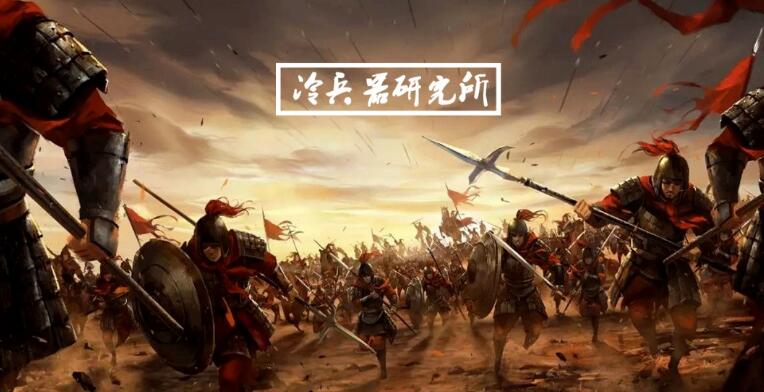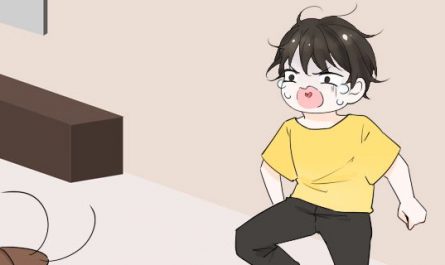In domestic costume films, the war scenes are usually two groups of people rushing up and then starting to fight each other, and win a few killing shots on one side, so that even viewers who are not good at mathematics can see that the other side seems to be dead. Many, and then the protagonist will show off his mighty skills and apply special effects, even if he wins. However, in actual military strikes, both sides often try first, and no one is willing to make a full move. Stealing hands and legs, such as small and concealed moves, are the most common openings. So when fighting in ancient times, is it to fight against each other directly in the film and television works, or is it the same as the modern warfare, the two sides try first?
As a sport, modern combat combat has been as realistic as possible, but it is always different from actual combat. First of all, it is confronted under conditions as fair as possible. Unarmored combat combat is where two people fight against each other with basically similar weapons. Under the rules, it can only simulate a heads-up duel, which is very different from the situation of multi-player confrontation on the battlefield. Even the technology required for emergencies on the street is different. Facing a conflict requires a quick response in the first place. For example, in ancient Japanese swordsmanship, there are Iaido, which is what we often call the sword drawing technique. How to draw the knife quickly is particularly important in the face of emergencies. Including our common Japanese samurai often wear two swords, one long and one short, but also to deal with different situations. Long swords are used on the street, and the indoor narrow terrain. Long swords are drawn when they are not opened.
However, because China does not have a martial arts class like the Japanese samurai, many people cannot have legal sabers, so many concealed short weapons can be hidden in the body without being seen, and how to quickly remove them. It’s just that these skills in modern society are no longer useful, and most people who know how to avoid it do not show it publicly. In modern combat sports, two people hold equal weapons, stand at a safe distance and are ready to start confrontation. When facing an opponent that is already prepared, if they rush forward, they will easily be counterattacked by the opponent, so they can only try to mobilize the opponent’s defense first Look for an opportunity to attack after the posture. So even if you want to turn to the ancient arena and street fighting techniques, you need to adjust.
In ancient times, the techniques and warfare were different. It was not like the two groups rushing to catch each other as in the film and television works. This kind of uncooperative fighting method can only be regarded as an exaggeration of art, even now the fighting in groups is better than this. Kind of cooperation. In ancient wars, soldiers needed to be lined up. Of course, this lineup wouldn’t be as exaggerated as the one in classical romance novels. You had to find the gate to get out. The ancient military formation mainly relied on the close formation to let the soldiers cooperate with each other to kill and wound. What they needed was uniformity and absolute discipline. This is what Qi Jiguang, a famous anti-Japanese general in the Ming Dynasty, mentioned in the opening chapter of “Ji Xiao’s New Book”: “Guang said: Open a big battle against the big enemy. You are more skilled than the court, catching small thieves, and hundreds of people line up in different dignified formations. Before, the brave must not be the first, and the timid must not be behind; Cong spears, Cong spears, slashes, and kills him back. They just rush in together. It’s hard to change hands. How can you tolerate left and right movements?”
Therefore, the military’s martial arts emphasizes simplicity and directness, focusing on discipline, but this does not mean that skills are not required. Military martial arts also require various counter-attack skills. “Ji Xiao’s New Book” has recorded the offensive and defensive confrontation of marksmanship: “Eight female guns starter: You pierce me, I take the gun. You pierce me, I stop the gun. You pierce my foot, I slam the gun. You pierce, I catch the gun. You pierce, I scull the spear. You pierce, I catch the gun. You pierce, I tip the gun. You shoot, I entangle and stop. You pierce me, I take the gun. “This is the military formation. How to defend and counterattack the various attack angles that the opponent can make. The two sides didn’t have too much temptation. At the beginning of the spear contact, they continued to attack and defend. They blocked the opponent’s spear and stabbed after entering the attack distance.
Ancient wars relied on collective power, and the temptation was also to separate a unit to test. For example, the cavalry first ran around the infantry formation and shot a round of arrows. If the opposing soldier’s panic formation appeared gaps, he could attack directly. But if the infantry formation is strictly disciplined and orderly, it can only be withdrawn and let our infantry formation head-on. The individuals who fall on each soldier have always been advancing and not retreating. Individuals have no chance to tentatively attack, and they all maintain the formation and directly press on to cooperate with each other to kill.
Most of the ancient military formations were dominated by spearmen. The spear formation was easy to use because the spear formation was a dense formation. The spears in the back row can stick out from the cracks of the people. You are not facing a spear, but Every step of the stack is a pile of gun heads in front of you, you will be stabbed in by a long spear when you expose a gap, and the left and right sides can attack you diagonally. So in terms of formation, the long spear array can be used as the maximum placement density, and several people are attacking you every step of the way. So the ancient soldiers mainly practiced marksmanship. When there is a formation, the following team advances, which determines that if it is a long-barreled weapon such as a spear, the first thing that can be encountered is the opponent’s spear, not the enemy. Therefore, the long spear formation starts with the long spear first, and the two sides will move slowly, while trying to smash the other’s spear until they can reach the distance of the other party, and stabbing hard.
For example, China’s Xingyiquan is an army martial art, which is based on the spear, and takes off the spear as the fist. Pay attention to straight forward and retreat, as the fist proverb says, “You can use your mind at any time, hit hard and enter without blocking”, but this non-blocking is not to not defend, but to cover yourself while attacking, so that the other party cannot find it. Opportunity to attack. Therefore, compared with other traditional martial arts genres, Xingyiquan has a big feature that even if a group of Xingyiquan practitioners do not know each other, they can naturally cooperate with each other. Because they go straight and retreat, they can stand side by side. Worried about his teammates dodge and bump into himself. At the same time, there are various techniques to pry the opponent’s center of gravity to break the opponent’s defensive posture. Single use is to first break the opponent’s frame and then hit the opponent, but if there are multiple same doors, one person can naturally break the opponent’s frame and the other person will go up. Strike, control one by one. This can well reflect the situation of the ancient army in combat.
Of course, if the pure military martial arts techniques are used to walk the rivers and lakes, some adjustments and improvements are also required. This is why the Xingyiquan genre is divided into Che-style Xingyi, Song Xingyi, Sun Xingyi, Shangshi Xingyi and so on. It is because of the different environment that future generations will be based on their own environment. Adjust the technique of the genre. This is also the reason why there are many genres of traditional martial arts and no technique can eliminate other genres. There is no strong technique, only the most suitable technique.
In ancient wars, there were not only pikemen, but usually multiple arms. For example, when the European Pike Array was most popular, many corresponding tactics were derived. For example, there are two-handed swordsmen in the spears. When the spears are shifted, their spears will disturb the opponent’s spear. The swordsmen take the opportunity to split the opponent’s spear and drill in. If they rush in, they will open Wushuang. If they can’t enter, they will be stabbed to death on the charge road. There are also spearmen who squat down directly under the barrel of the spear and drill through, and use short weapons to kill the opponent behind them. Because they have to bend down and lower their heads to drill over like a mouse, this style of play is called rat warfare.
China also has similar tactics. It is recorded in Song History that when facing the heavy infantry of the Kingdom of the Kingdom, the Song army used a large axe and a spear to attack: “During the war, Wu Shu was attacked by a white robe, riding on a horse, and fighting with teeth. In the battle of the thousand governors, the soldiers were all heavily armored and called “Tie Fu Tu”; wearing Tie Dou Mou, Zhou Zai decorated with long eaves. The three of them work together with Weisso. Every step forward is to support him by rejecting the horse, and when the person goes further, he advances when he rejects the horse, and he cannot retreat. The officer and army used a spear tag to go to his pocket, and his arm was broken with a big axe, and his head was shattered. “Long spears can be formed into a dense formation, but the attack efficiency is relatively low. Therefore, slashing weapons such as long swords and large axes are very suitable to open the situation. When the two spears are mixed with each other, they can take the opportunity to slash and slash. Great lethality.
If it is a shield player, there is no tentative behavior. It is to hold the shield to protect yourself and push forward. When entering the attack range, use the shield to squeeze the opponent’s weapon to make it difficult to use the opponent’s weapon, and then use it in the gap of the shield. Stabbing each other. In the period between the late Ming and Qing dynasties, the rattan players shouldered the responsibility of resisting the opponent’s musket shooting. The main technique was to try to make the opponent hard to hit him, even if he was hit, he was blocked by the rattan card, and then quickly cut at close quarters. Kill the opposing musketeer. Because the rattan card has limited defense power, if it is made into a complete defense against firearm shooting, the defense power is too heavy. Therefore, only limited defense against the opponent’s musket shooting, if the enemy sets the fire cane card, it will inevitably be destroyed. Therefore, there are many more techniques of tumbling to narrow the distance and avoid shooting. Although it can be considered as a deadly chop after rushing closer, but it is very demanding for the technique to avoid being killed on the way to rushing closer. It’s so simple to chop the brain to death, and the Huyiteng brand army of the Qing Dynasty has always been the grade of elite special forces.
Therefore, in ancient times, warfare was neither slashing to death, nor did it repeatedly test each other like a soldier fight. Soldiers have their own unique skills in combat. They mainly rely on mutual cooperation to avoid being hit by the enemy while trying to kill the enemy as much as possible. .






